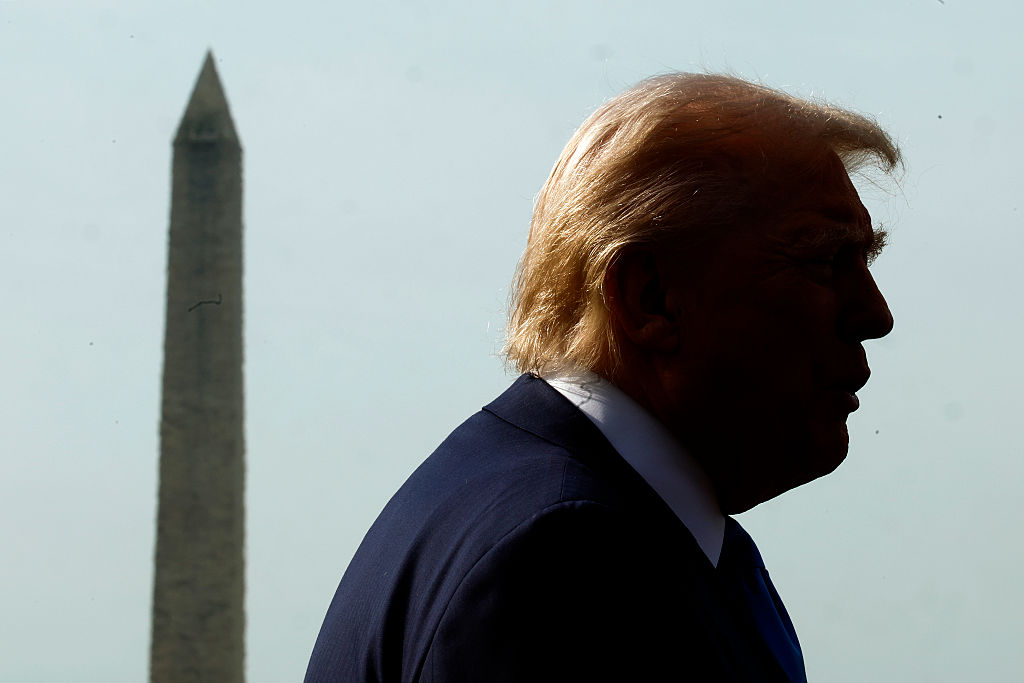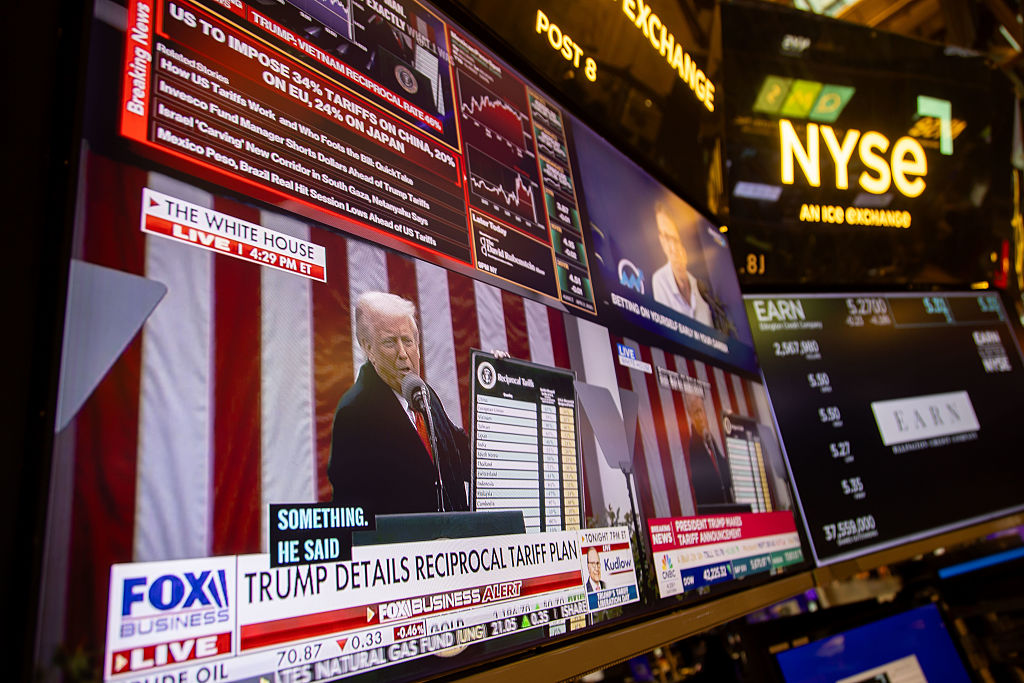Trump's First 100 Days: Retirement Savers Learn the Importance of Staying the Course
From wild stock market gyrations to emotional trading, here’s how President Trump's first 100 days have impacted retirement savers.


President Trump's first 100 days have been a wild ride for retirement savers, particularly those who have let fear or greed cloud their judgement.
But who can blame them in these tumultuous times?
Heading into Trump’s second term as President, expectations were high that the stock market would continue its bull run and then some.

Sign up for Kiplinger’s Free E-Newsletters
Profit and prosper with the best of expert advice on investing, taxes, retirement, personal finance and more - straight to your e-mail.
Profit and prosper with the best of expert advice - straight to your e-mail.
After all, most pundits were betting deregulation and the extension of the Tax Cuts and Jobs Act of 2017 would fuel further stock market growth. That may have been true in the early days of Trump’s second presidency with stocks soaring on what was known as the Trump bump.
But then “Liberation Day” came in early April and everything went south. With the president slapping tariffs on pretty much every country in the world, and with the prospects of a trade war with China, stocks tanked, dragging many people’s retirement savings down with them. Concerns about the future of Social Security added fuel to the fire.
Panic sent in with some retirement savers thinking moving to cash was the prudent course of action. After all, on April 3 the Dow Jones Industrial Average dropped nearly 1,700 points.
Then the 90-day pause in tariffs was announced on April 9 and the Dow Jones Industrial Average soared about 3,000 points, the biggest single day gain on record. Investors who got out of the markets missed out on that meteoric rise.
The good news: most retirement savers left their asset allocations alone during this bout of volatility, says Bill Van Sant, managing director at Girard, a Univest Wealth Division. While they were forced to pay attention to the stock markets, they didn’t react based on emotion and fear.
“The biggest impact for retirement savers (from Trump’s first 100 days) is to remain committed to retirement savings,” says Van Sant “It's a test for retirement savers to continue to stay the course in a diversified investment strategy.”
Trump's First 100 Days: markets recouping losses for retirement savers
Despite all that back and forth, year-to-date the S&P 500 Index is down about 5.4%, recouping some of the earlier losses. The Nasdaq is off nearly 9.8%, while the Dow Jones Industrial Average is down 4.5%.
The retirement savers who have a long term plan that includes a well diversified portfolio have been able to weather the volatility better than those that have all their investment dollars in high growth U.S. stocks. This period also shined a light on the need for a plan.
“The biggest takeaway from the last 100 days is you have to have a plan,” says Derrick Longo, a wealth advisor at Exencial Wealth Advisors.
His clients fall into three buckets: those who are worried about the change Trump brings and want to get more conservative, investors who believe in the change and want to get more aggressive and the ones who are shutting down and don’t want to open their statements.
The one thing they all have in common is they are being driven by emotion and the ones who act on that tend to regret it.
“It's the greed or fear button,” but if clients have a plan in place they can ignore both emotions, says Longo. “The plan has to dictate the allocation, the risk tolerance has to dictate the allocation. It can’t be an emotional decision, a fear and greed decision.”
Revisiting finances in Trump’s first 100 days
Trump’s first 100 days in office has also forced retirement savers to think about their finances beyond their investments. After all, talk of trade wars, rising prices, and a potential recession can cause people to clamp down on their spending and save more, all of which are good in the long term.
“It's not just about stocks and bonds and investments, it's about having enough cash to last six months if you lose your job," says Longo. "It's understanding debt, emergency savings and having the discipline to not spend."
The need for help
DIY has its place, but if the first 100 days of Trump’s presidency has taught some retirement savers anything, it's the need for professional help from a financial adviser. After all, financial advisers are more than stock pickers. They can be your sounding board and can help walk you back from the edge during volatile times.
Longo and Van Sant have been fielding calls all month from clients worried about the markets and have spent countless hours reassuring those clients. Keeping the focus on long-term plans and asset allocation has brought peace of mind. They are also getting calls from prospective clients who want help constructing a long-term plan.
“Our clients have a financial plan that we put in place before the volatility," says Van Sant. "When we are looking at the recent volatility and then updating within the financial plan, for the most part, the volatility is showing no big impact, and they are breathing a sigh of relief."
Keep it in perspective
The stock markets are volatile and uncertainty is at a fever pitch in Trump’s first 100 days, but that doesn’t mean retirement savers need to react.
While President Trump’s in-your-face style and policies are raising worries, the lack of action on the part of retirement savers is a testament to their resolve. The biggest takeaway from Trump’s first 100 days: stay the course for the long haul.
Related content
Get Kiplinger Today newsletter — free
Profit and prosper with the best of Kiplinger's advice on investing, taxes, retirement, personal finance and much more. Delivered daily. Enter your email in the box and click Sign Me Up.

Donna Fuscaldo is the retirement writer at Kiplinger.com. A writer and editor focused on retirement savings, planning, travel and lifestyle, Donna brings over two decades of experience working with publications including AARP, The Wall Street Journal, Forbes, Investopedia and HerMoney.
-
 Amazon to Display Tariff Charges on Their Product Listings
Amazon to Display Tariff Charges on Their Product ListingsHow much will tariffs increase Amazon's prices?
-
 How Trump's First 100 Days Have Impacted Your Portfolio
How Trump's First 100 Days Have Impacted Your PortfolioPresident Trump's first 100 days in office have been busy, with a flurry of executive orders sparking volatility in the stock and bond markets.